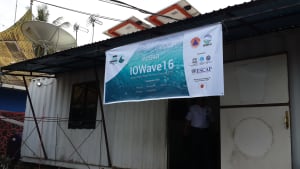Padang city is one of the focus cities for the 2016 Indian Ocean Wave Exercise (IOWAVE16) in Indonesia. The city and its people has experience several major earthquakes in the past ten years and highly at risk to tsunami. It is not far from memories when the city experienced the deadly magnitude 7.3 earthquake on 30 September 2009. From there, it also felt the shaking of the 2010 Mentawai Tsunami and recently an earthquake with magnitude 7.8 on Richter scale on 2 March 2016 and magnitude 6.5 Richter scale earthquake on 2 June 2016. As focal point for IOWAVE16, cities in Indonesia and Indian Ocean in general, can learn from the experience of Padang city.
With its mid-size population, the city and its people continuously developed policies, strategies, and implement actions for tsunami risk reduction. In the span of five years the city has significantly developed its institutional capacities in receiving tsunami early warning system and improve emergency response preparedness. It has provided itself with empowered local disaster management office (BPBD-Badan Penanggulangan Bencana Daerah) and equipped with 24/7 emergency operation center (Pusdalops). A standard operating procedure (SOP) was developed and formalized, in the form of Padang City Mayor Regulation 14/2010, and a city tsunami contingency plan. Furthermore, along the coastal zone in Padang city, there are 45 sirens put within the red zone of the city, 9 dedicated tsunami evacuation shelter buildings erected with additional 76 potential tsunami evacuation shelter, one disaster preparedness group (KSB-Komunitas Siaga Bencana) for each sub-district (kelurahan) formed collaboratively by and within the community, as well as the implementation of school-based disaster preparedness community.

Nevertheless, the city, its local government and people are continuously learning for a better tsunami preparedness and early warning system, and taking the opportunity to do so through the IOWAVE 2016. Few weeks before the IOWAVE 16, Padang city has started preparing themselves by reviewing the level of preparedness of the local government agencies and community, this includes a focus group discussion (FGD) and table-top exercise (TTX), with the support of Bandung Institute of Technology (ITB) and multiple community meetings. With the process and by looking at the performance during IOWAVE16, it is expected that the city will developed a new mayor regulation on tsunami early warning and emergency response SOP, which includes community-level organizations as one of the actors for early warning information relay.
By: Mizan Bustanul Fuady Bisri







